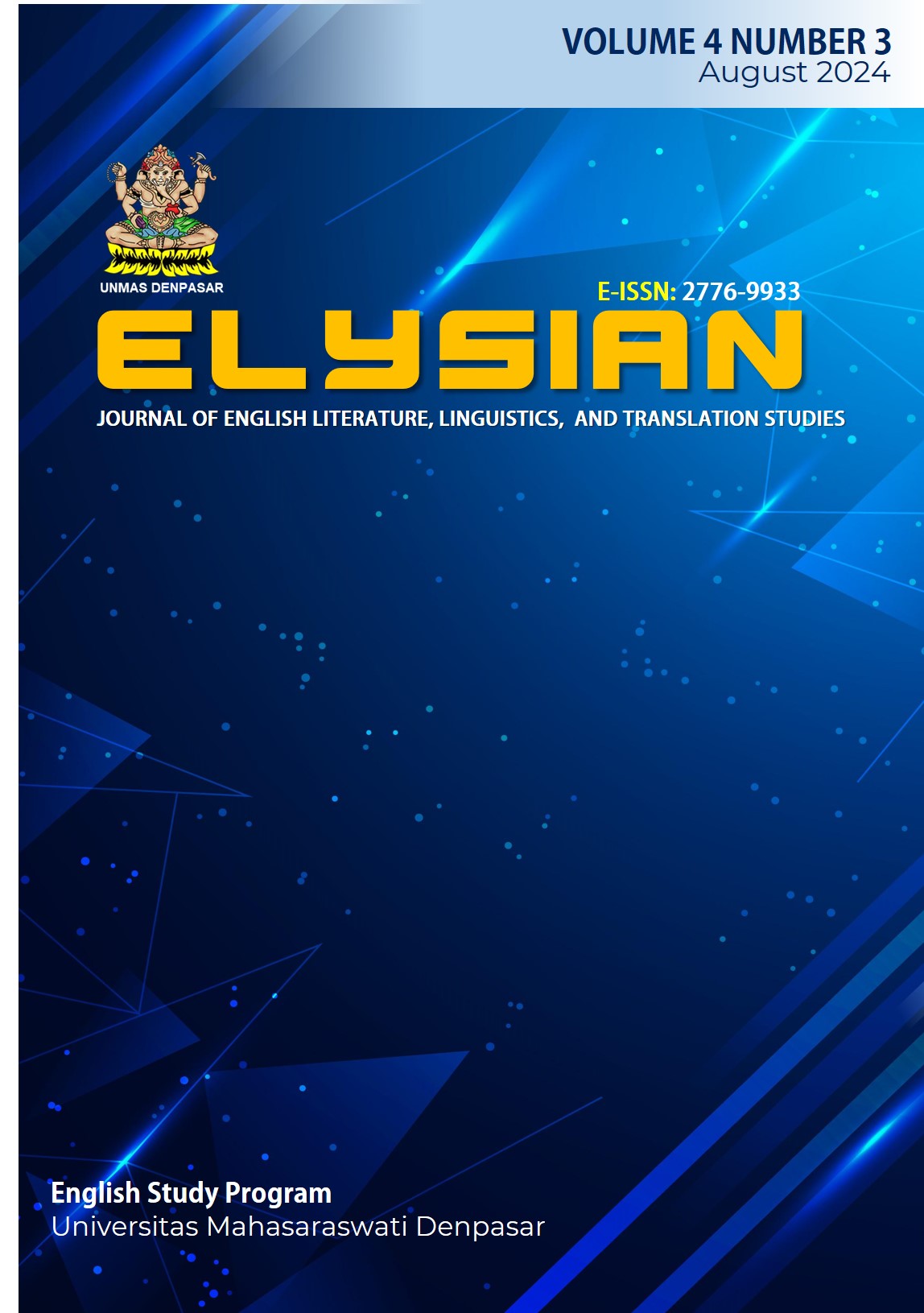Behind the Script: Analyzing Figurative Language in "Free Guy"
DOI:
https://doi.org/10.36733/elysian.v4i3.9454Abstract
This study underscores the importance of figurative language in film, particularly within a digitally-driven narrative like "Free Guy." It provides valuable insights into how linguistic creativity supports storytelling in contemporary cinema, enriching both the viewers' experience and the overall impact of the film. Using Barthes' theory of semiotics, which examines how meaning is constructed through signs and symbols, the study reveals that figurative language functions as a crucial signifying system in "Free Guy." Leech's theory of figurative language, which categorizes different types of figurative expressions, provides a framework for analyzing their specific functions in the film. This study identifies how metaphors, similes, hyperboles, personifications, and metonyms collectively enhance the storytelling process. The results of the study indicate that metaphor is the most dominant form of figurative language in "Free Guy," highlighting its significance in enhancing the narrative and thematic depth of the film. Similes and hyperboles also play crucial roles, particularly in character development and conveying humour. The presence of these figurative elements enriches the viewer's experience by providing additional layers of meaning, which strengthens emotional engagement and understanding of the story, while personifications and metonyms add vividness and relatability to the virtual world depicted in the movie. Furthermore, this study opens avenues for further exploration into the role of figurative language in different film genres and other forms of digital storytelling. Future research could examine how these linguistic tools influence viewer perception and emotional engagement across various cinematic contexts. Understanding the use of figurative language can reveal its power in shaping narratives, enhancing emotional engagement, and adding layers of meaning.
References
Barthes, Roland. (1964) Elements of Semiology Paris: Jonathan Cape Ltd
Faruk, U. (2017). An analysis of figurative language used in the Great Gatsby movie.
Grindon, L. H. (1879). Figurative Language, Its Origin And Constitution. London: James Speirs.
Hasanah, U. (2017). An analysis of figurative language in wild child movie.
Maftuhah, E. R. (2018). Figurative Language in Selected Brain.
Leech, L. (1978). Literature : structure, sound, and sense.
Shaw, Harry. (1972). Dictionary of Literary Terms. USA:McGraw Hill.
Wikipedia. (2021). Free Guy. Retrieved from https://en.wikipedia.org/wiki/Free_Guy
Wilayawati, Maryani. (2018). An Analysis of Figurative Language in Taylor Swif’s Song Lyrics. IKIP Siliwangi
Wragg, T. (1999). An Introduction to Classroom Observation-Routledge.








